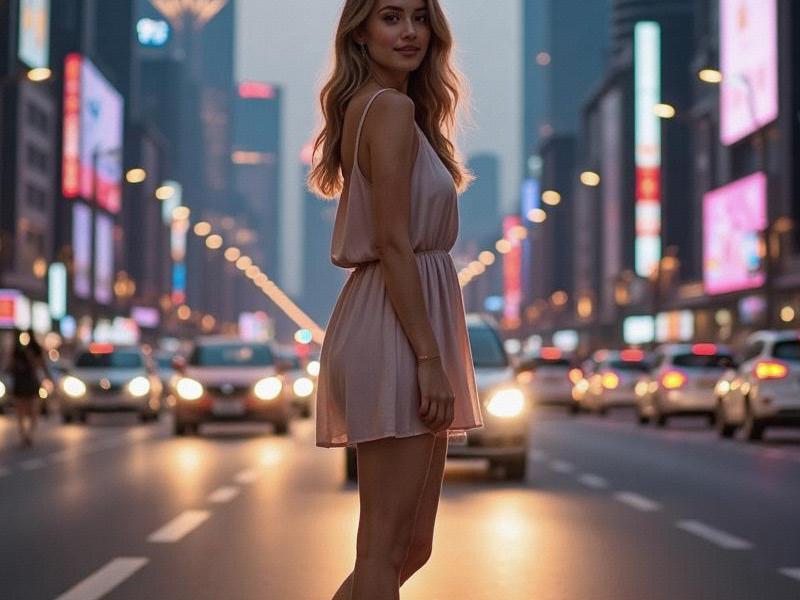This investigative feature explores how Shanghai has developed unique beauty standards that blend traditional Chinese aesthetics with global influences, creating a distinctive urban femininity that's reshaping perceptions across Asia. Through interviews with sociologists, fashion designers, and Shanghai residents, the article reveals the complex interplay of history, economics and culture that makes Shanghai women stand apart.

In the heart of Shanghai's Bund district, a fascinating visual contrast unfolds daily. Groups of young women dressed in cutting-edge designer outfits pass by elderly Shanghainese ladies wearing traditional qipao dresses with equal poise. This coexistence encapsulates Shanghai's unique beauty paradox - a city where time-honored Chinese ideals and globalized modernity not only coexist but actively inform each other.
Historical Foundations of Shanghai Beauty
Shanghai's beauty standards have roots in its special position as China's first international settlement. The 1920s and 1930s saw the emergence of the "Shanghai Girl" archetype - educated, Western-influenced yet distinctly Chinese. Historical records from the Shanghai Municipal Archives reveal how beauty parlors along Nanjing Road in the 1930s offered both traditional hair ornaments and the latest permanent wave machines from Paris.
"The Shanghai woman has always been China's most sophisticated beauty consumer," explains Professor Lin Yao of Fudan University's Cultural Studies department. "Even during the Cultural Revolution when makeup was frowned upon, Shanghai women found subtle ways to express beauty through well-groomed hair and carefully tailored clothes."
The Modern Shanghai Aesthetic
Contemporary Shanghai beauty standards reflect several distinctive characteristics:
上海私人外卖工作室联系方式 1. The "Porcelain Skin" Obsession: Shanghai women invest heavily in skincare, creating a $2.3 billion local beauty market. The ideal remains flawless, pale complexion - but now achieved through high-tech treatments rather than just avoidance of sun. Clinics offering "drip whitening" IV therapies have proliferated across the city.
2. Hybrid Fashion Sense: Unlike Beijing's bold statements or Hong Kong's casual chic, Shanghai style emphasizes subtle combinations. It's common to see a $5,000 Chanel jacket paired with vintage silk pants from the Qing dynasty era. Local designer Zhang Na notes, "Shanghai women understand that true style isn't about labels but how you combine elements."
3. The Confidence Factor: A 2024 survey by Shanghai Normal University found that 78% of local women feel "comfortable setting my own beauty standards" compared to 52% nationally. This confidence manifests in everything from silver-haired influencers to plus-size models walking Shanghai Fashion Week.
Economic Influences on Beauty Standards
As China's financial capital, Shanghai's beauty ideals are deeply tied to its economic power:
上海夜网论坛 • Luxury brands develop Shanghai-exclusive products knowing local women account for 22% of China's high-end beauty spending
• The rise of female entrepreneurs (38% of Shanghai startups are women-led) has created demand for "power beauty" - professional yet feminine looks
• International exposure means Shanghai women are early adopters of global trends, from Korean glass skin to French girl makeup
Cultural Preservation Meets Innovation
While embracing global influences, Shanghai maintains strong connections to traditional beauty practices:
• The Shanghai Museum of Traditional Chinese Medicine reports surging interest in herbal beauty treatments among young women
• Qipao-making has been recognized as an intangible cultural heritage, with modern designers updating the classic silhouette
上海喝茶服务vx • Vintage hairpins and jade jewelry are being reinterpreted by local accessory brands
The Future of Shanghai Beauty
As Shanghai prepares to host the 2026 World Expo, industry experts predict several emerging trends:
1. "Smart Beauty" - wearable tech that monitors skin condition and adjusts makeup accordingly
2. Sustainability - growth of refillable beauty products and upcycled fashion
3. Authenticity Movement - more women embracing natural gray hair and minimal makeup
Ultimately, Shanghai's beauty landscape continues to evolve while maintaining its core characteristic - the ability to absorb outside influences while remaining unmistakably Shanghainese. As one 28-year-old finance executive put it: "In Shanghai, beautiful means being confidently yourself - whether that's in a qipao or a pantsuit."